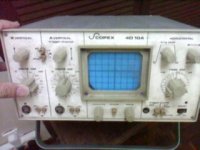Well, again it depends upon what you're using the O-scope for. Note that the sampling rate is pretty fast 250MHz dual-channel and 500 MHz single-channel. So the question is if you're looking for very short pulses or accurate rendering of fast analog waveforms, the Nyquist limit is going to play hob with that--and that's why you need to oversample.
But if you're looking for "I see a high" or "I see a low", your scope has quite a bit of headroom. That's why, for example, the combo logic-analyzer/DSO setups have much higher frequency limits on the logic analyzer frequency than the DSO part does. The 'scope cares about accurately rendering the wave shape, while the logic analyzer only cares that there's something there or not--shape be damned.
I'm going to guess that you're going to be using the scope as a logic analyzer. In that case, it's suitable for just about any vintage computer you're going to use it on.

